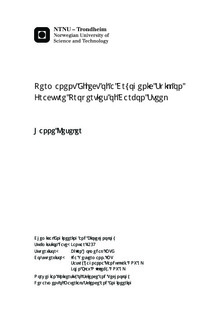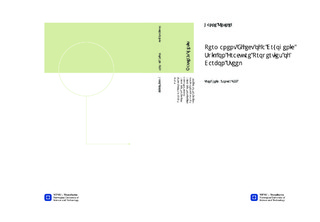| dc.description.abstract | In this work, the permanent effect of a cryogenic spill on the fracture properties of carbon steel was investigated. The experimental work consisted of two main parts. The first part was the examination of a plate of material cut from a NV E36 carbon steel platform deck, which had been exposed to a liquid nitrogen spill. This examination consisted of a fracture analysis, in addition to Charpy V-notch impact testing. In the second part of the experimental work, specimens of the platform material and a DOMEX S355 carbon steel, were subjected to a simulated cryogenic spill and the material was subsequently examined.
The fracture analysis of the platform material, was done by macroscopic observation of the damaged part of the platform deck, in addition to fracture surface examination in a scanning electron microscope (SEM). These examinations indicated that the fracture had started at a flaw in the weld during the liquid nitrogen spill, as a consequence of low-temperature embrittlement and thermal stresses experienced by the material. The fracture appeared to have propagated through the cold regions of the material by a brittle transgranular mechanism, until it encountered material of higher temperature and ductility and eventually was arrested. The paint layer on the steel had cracked in certain regions of the platform deck. This cracking had occurred as a result of different thermal contraction rates of the steel and the paint. Therefore, the paint cracks could be used as an indicator of which regions of the platform deck had been cooled to the lowest temperatures during the spill.
Charpy V-notch impact testing was done at 0C, by using standard transverse and longitudinal specimens from two adjacent regions of the platform deck. The average impact energy was 38,68 J for the transverse specimens and 102,83 J for the longitudinal specimens. The impact energy appeared to be below the minimum requirement only for the transverse specimens. The fracture surfaces and cross sections of selected Charpy specimens were examined in the SEM. However, no evidence of pre-existing damage was found. Microcracks were only found at small distances below the brittle fracture surfaces and were believed to have formed during the brittle crack propagation.
Simulation of a cryogenic spill was done by tensile testing in liquid nitrogen. The tensile behaviour of both the platform material and the DOMEX S355 steel at -196C, was first examined. Both steels showed a large increase in yield- and fracture strength and a large increase in the Lüders strain, compared to the room temperature behaviour. Examination of their fracture surfaces in the SEM, showed that the fracture mechanism was brittle transgranular. The conditions during a cryogenic spill were simulated by applying a constant tensile force to specimens of the two steels for a period of 10 min, at liquid nitrogen temperature. Subsequent tensile tests at room temperature, showed that this treatment had no significant effect on the tensile behaviour of the specimens.
When examining longitudinal cross sections of the tensile specimens in the SEM, some damage was found. A small amount of microcracks were found after holding a DOMEX S355 specimen for 10 min at a constant force below the yield point, in liquid nitrogen. After tensile testng a specimen of the platform material (NV E36) to fracture in liquid nitrogen, cracks associated with elongated manganese sulphide inclusions were found through the whole test region. These cracks probably formed as a result of the inclusions having a higher thermal contraction rate than the steel. On cooling, this can cause decohesion or void formation at the inclusion-matrix interface and simultaneous deformation may have caused formation of cracks. Both the microcracks and sulphide related damage may give permanently reduced impact energy after a cryogenic spill. | |

